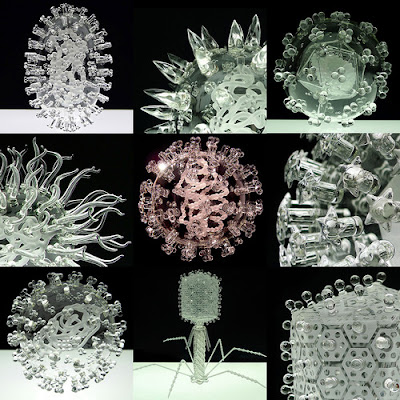Often creativity is stereotyped as a fluffy practice where one paints or draws or designs something but creativity also encompasses a great deal of innovation. In fact, it's more of a culture for being able to think beyond the box. A blog post on
Not Another Quarter-Life Crisis brings up this idea as the blogger (a medical doctor herself), commented on the role of creativity in the field of medicine and why it isn't an integrated part of medical work culture.
One of my fellow house officers paints in his spare time, another writes poetry. I can think of a couple who play musical instruments to a professional standard, and another few that composes on their nights off. I think overall we’re a pretty creative bunch, and handpicked for medical school because of our interests outside of academia.
And yet one of the biggest problems I have with the medical system is the lack of creativity.
Medical school is regimental, it rewards conformity, and rarely provides the opportunity for critical and creative thinking. Being a junior doctor is worse. Before becoming house officers we were told the most important skill to have in order to survive the next few years is time management. Not an ability to analyse or problem-solve, nor an ability to make decisions, but rather efficiency, an ability to keep your head down and finish the jobs.
Being new to the medical system we have different perspectives and fresh ideas, and yet we often lack the opportunity to express them. Who do we tell for it to be taken seriously? And who wants to listen to us naive idealists anyway?
I believe the formality of medical school and the ensuing hierarchy within the medical system is crushing our creative spirits, and the healthcare industry is losing out. Imagine if we can turn all those creative energies into innovations! How? I’m not exactly sure. Maybe a FedEx Day as this author recommends may help, maybe not. But let’s start brainstorming, and start nurturing those creative juices right from day one of medical school.
In a way medicine is built on a foundation of formality, procedure and (at times) bureaucracy, but none of our largest medical advances were ever made from conforming to procedure. Is scientific research creative? It might not be the kind of organic expression that you might expect from the word 'creativity', but it does create advances in medical practice.
Understandably, in today's world, conformity has become the norm - accountability and rigid systems efficiency doesn't allow much leeway for ideas, let alone change. Medicine might have a completely different feel if the 'creative juices' were a part of practicing medicine and this can be said for many other fields where followed processes is encouraged, even in 'creative' fields such as architecture (where planning permission can stifle even the most humble of designs).
Along the lines of creative problem solving,
an article by New Scientist cites a journal which found that people who feel anger brainstorm in a more unstructured way, consistent with creative problem-solving. Anger is often seen as a negative emotion, but examples of how controlled anger can be used for great effect are people like Gandhi and Nelson Mandela. Of course, how you express or use your anger is up to you. To quote the former: "You must be the change you want to see in the world."
Thanks Alice for her blog (shown above) - you can see more from her on Not Another Quarter-Life Crisis. You can also see more about creativity and science here on Creative Collision.
















